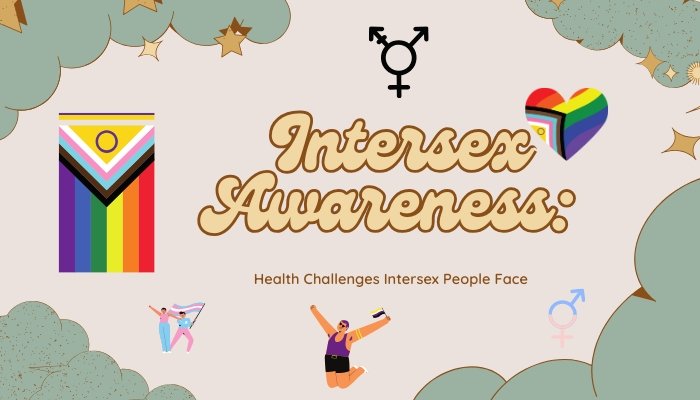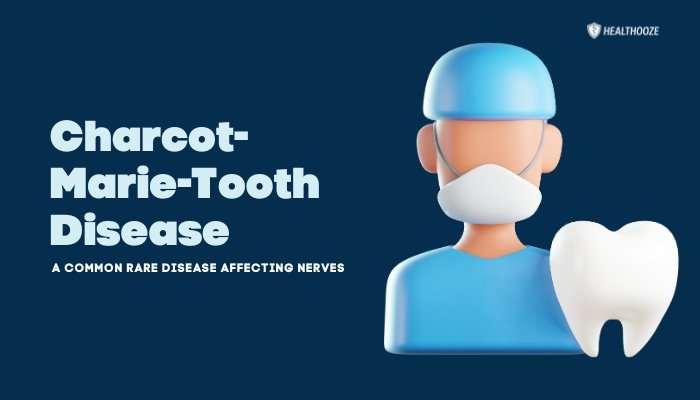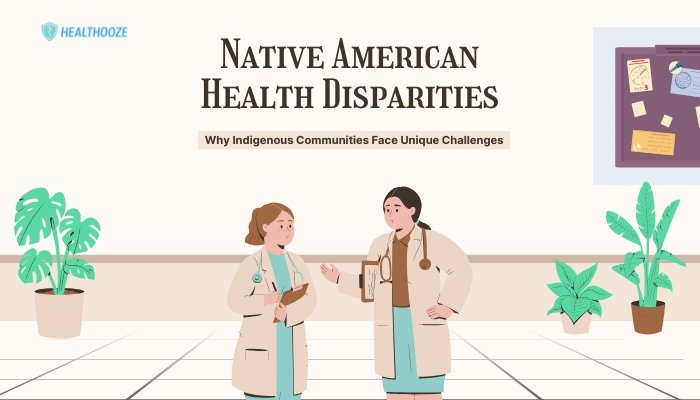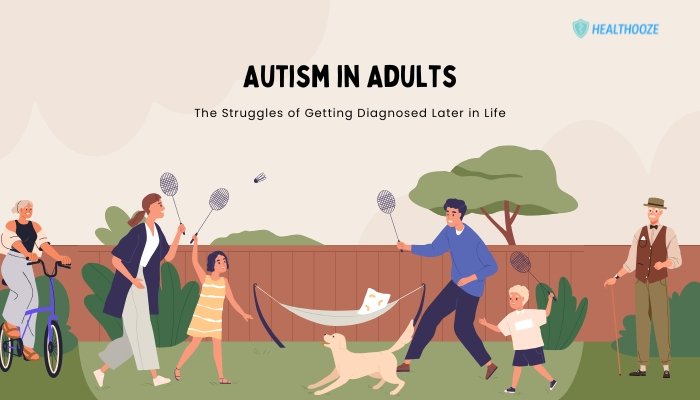Introduction
Intersex refers to a variety of natural variations in physical traits that do not fit typical binary ideas of male or female bodies. These variations can involve chromosomes, hormones, internal organs, and external genital characteristics. Intersex traits can appear at birth, or they may emerge later in life.
Intersex is not a single condition. Instead, it is an umbrella term that covers a broad group of conditions or differences in sex development (DSD). These differences have medical, psychological, and social implications.
Historically, many societies have lacked awareness about intersex variations. When babies were born with unclear external sexual traits, medical teams often made decisions—such as surgery—to assign a sex based on what they viewed as “most appropriate.” Intersex individuals and advocacy groups have pushed against rushed procedures that might cause harm or reduce autonomy.
Early unneeded surgeries can increase risks of physical pain, limit sexual function, and cause psychological stress. These concerns have initiated calls for more patient-centered care that prioritizes informed consent.
This article provides a thorough overview of intersex. It describes the physical characteristics associated with these variations, highlights unique health challenges, and explains ways to create more inclusive systems. It also looks at ethical debates and the pursuit of legal protections that safeguard bodily integrity.
By recognizing the real experiences of intersex individuals and focusing on evidence-based care, health professionals and communities can foster an environment that respects both physical and emotional well-being.
What Does “Intersex” Mean?
The term “intersex” indicates that an individual’s sex traits fall outside the traditional definitions of male or female. This can relate to:
- Chromosomes: Variations that differ from the typical XX or XY patterns.
- Hormones: Levels of testosterone, estrogen, or other hormones that do not match typical male or female ranges.
- Internal Reproductive Organs: Structures such as the uterus, ovaries, or testes that appear in atypical combinations.
- External Genital Characteristics: Genital traits that do not match typical male or female appearances.
These elements interact in many ways, leading to a range of possibilities. Some individuals may notice intersex traits at birth if external signs are visible. Others might identify these traits only later, during puberty or adulthood, especially if they encounter reproductive or hormonal differences.
Differences in Sex Development (DSD)
“Differences in sex development” is an alternative phrase used by some medical professionals. Some individuals prefer “intersex,” while others find clinical terms like DSD more comfortable. Language in this field is personal. People choose labels that suit their circumstances and identities. Medical teams, advocates, and families should be mindful of these preferences, using language that affirms each individual’s experience.
Common Intersex Variations
Intersex traits span a range of genetic and hormonal patterns. Each variation has its own characteristics and health considerations. Below are examples of well-known intersex traits. This is not an exhaustive list, but it gives an idea of different types that people may encounter.
Congenital Adrenal Hyperplasia (CAH)
- Primary Feature: This condition involves enzyme issues in the adrenal glands that cause elevated androgen levels in genetic females (XX).
- Typical Presentation: Some newborns assigned female may have genitals that appear different from typical female anatomy.
- Key Challenges: Hormone imbalances can prompt salt-wasting crises. Management often includes hormone replacement.
Androgen Insensitivity Syndrome (AIS)
- Primary Feature: An XY individual’s cells cannot respond fully (or at all) to androgens (male hormones).
- Partial AIS: May result in external traits that are partly female-typical and partly male-typical.
- Complete AIS: Leads to external female-typical traits, often discovered when menstruation does not start at puberty.
5-Alpha Reductase Deficiency
- Primary Feature: An enzyme needed to convert testosterone into dihydrotestosterone is deficient or absent.
- Typical Presentation: At birth, external traits may appear female-typical or ambiguous in an XY individual, but virilization can happen around puberty due to testosterone effects.
Klinefelter Syndrome (XXY)
- Primary Feature: An additional X chromosome in a person who is typically assigned male.
- Common Traits: Small testes, reduced facial hair, sometimes breast growth. Infertility or low fertility is also common.
- Medical Concerns: May include low testosterone, bone density issues, or increased risk of certain autoimmune conditions.
Turner Syndrome (XO)
- Primary Feature: A missing or structurally altered X chromosome in an individual typically assigned female.
- Physical Traits: Short stature, possible heart and kidney issues, underdeveloped ovaries.
- Health Needs: Hormone support and close monitoring of cardiovascular health can be important.
Swyer Syndrome (XY Gonadal Dysgenesis)
- Primary Feature: An XY individual whose gonads do not develop properly, leading to a lack of typical sex hormone production.
- Typical Presentation: External traits that appear female-typical at birth, but puberty does not proceed without hormone therapy.
- Medical Management: Hormone replacement is essential to initiate puberty and support bone health.
Social and Emotional Impact
While biology plays a role, the experiences of intersex individuals are largely shaped by societal views and how they are treated. Many face internal stress if they grow up in environments that expect strict male or female norms.
Identity and Acceptance
Intersex individuals may adopt various gender identities: male, female, nonbinary, or another category that reflects their experiences. Some might not learn about their intersex traits until adolescence or adulthood. Discovering an intersex diagnosis later can cause confusion, relief, anger, or a mix of emotions. Clear, consistent communication from family and medical professionals can reduce distress.
Stigma and Secrecy
Historically, medical teams often advised parents to keep intersex traits hidden. This secrecy can lead to shame and isolation. Some parents, acting on medical guidance, did not tell their child about early surgeries or hormone regimens. This secrecy can create mistrust if the child eventually learns about decisions made without their input. Encouraging honest dialogue promotes better psychological outcomes.
Peer Interactions
A supportive peer group can help an intersex person feel less alone. Isolation can occur if a child is removed from conversations about their own body. Schools that stress strict male-female binaries can add to confusion. Inclusive education on human bodies and diversity builds empathy among classmates, reducing bullying or invasive curiosity. Peer support groups, both in-person and online, link intersex individuals who share similar experiences.
Medical Interventions: Key Concerns
In many cases, children with intersex traits undergo medical interventions. Sometimes, these procedures happen in infancy or early childhood, based on recommendations by medical teams. While some interventions may be urgent—such as those needed for salt-wasting CAH—others are cosmetic or driven by social norms. Such procedures can involve surgery on genital tissues, gonad removal, or hormone treatments. Debate continues about whether non-urgent interventions should be delayed until the individual can consent.
Genital Surgeries
Surgeries to “normalize” genital appearance have historically been common for children with intersex traits. However, many intersex adults report physical and psychological harm from early surgical interventions. Potential consequences include:
- Loss of sensation or scarring
- Chronic pain or sexual dysfunction
- Dissatisfaction if the chosen sex assignment conflicts with the individual’s eventual identity
Modern guidelines encourage caution. Unless a clear medical reason exists, clinicians often advise waiting until the child can participate in the decision. Parents may still feel pressured if they receive unclear or biased advice.
Hormone Treatments
Hormones can be part of health management for certain variations. For example, individuals with complete androgen insensitivity syndrome might need estrogen therapy during adolescence to support bone health. Individuals with congenital adrenal hyperplasia might require glucocorticoid therapy. Hormone management should address real medical needs, not just attempt to force a typical male or female developmental path. When doctors rush to block or supplement hormones purely for cosmetic reasons, they can ignore the child’s potential preferences.
Gonad Removal
Gonad removal (gonadectomy) has been performed due to risks of cancer in some forms of intersex, or to assign a specific sex. Certain intersex traits carry slightly higher risks of gonadal tumors, but that does not mean immediate removal is always required. Patients and families need accurate data about relative risks versus benefits. A forced gonadectomy can lead to lifelong hormone dependence, loss of fertility, and emotional distress if the individual later identifies in a way that differs from the surgical assignment.
Importance of Multidisciplinary Teams
Intersex care involves many specialties: endocrinology, urology, gynecology, psychology, and genetics. Collaborative care ensures that decisions address the patient’s overall health. A mental health professional familiar with intersex topics can explain emotional implications of interventions. Social workers and advocates can support families in navigating the medical system. The emphasis on shared decision-making helps protect the child’s long-term autonomy.
Psychological Well-Being
Emotional Stress
An intersex diagnosis can evoke feelings of fear, sadness, and uncertainty. Medical staff may focus on biology while neglecting emotional needs. Counseling can help families handle confusion around diagnoses and possible interventions. Psychological distress is heightened when the child grows older and notices changes that do not match others in their peer group. A strong support system—health providers, counselors, and peers—eases the transition.
Identity Formation
Identity is shaped by how individuals see themselves, how others treat them, and what information they receive. For an intersex person, confusion can arise if they learn about surgical choices made on their behalf with little explanation. Open, age-appropriate information fosters self-understanding. Supportive therapy can address issues such as shame, anger, or questions about sexual function in adulthood. A safe space to explore identity can reduce the risk of depression or anxiety.
Counseling and Peer Support
- Individual Therapy: One-on-one sessions give intersex individuals a place to process emotions and ask questions.
- Family Counseling: Parents and siblings can learn about healthy ways to discuss intersex traits, ensuring open communication.
- Peer Groups: Meeting others who have faced similar challenges reduces isolation and may help with coping strategies.
- Online Communities: Forums can connect people across distances. Moderated groups can offer referrals to local services.
Ethical and Legal Dimensions
Bodily Autonomy
Critics of early intersex surgeries argue that these procedures can violate bodily autonomy. They state that a child who is too young to assent or consent should not undergo irreversible interventions that are not medically essential. In many countries, legal debates continue about whether to ban unnecessary surgeries on intersex infants. Some medical groups have issued statements urging a delay in surgery when possible, to prioritize the child’s rights.
Informed Consent
Full informed consent requires that families and (when mature enough) the child receive accurate and unbiased information. This includes:
- Possible risks and benefits of surgery
- Alternatives to immediate intervention
- Emotional and sexual function outcomes later in life
- Likely need for ongoing procedures if a surgery is performed
Families often find it hard to weigh the pros and cons if health professionals emphasize “normalizing” or if they overstate cancer risks without clarifying actual percentages. Balanced data can help them choose the best path.
Legal Protections
In certain areas, intersex advocates have pushed for laws that forbid medically unnecessary procedures on minors. These proposals aim to let the individual decide once they reach an age where they can understand the benefits and consequences. Elsewhere, no specific legal protections exist, leaving decisions to the discretion of medical teams and guardians. Despite growing awareness, challenges persist in legal recognition of bodily autonomy for intersex children.
Healthcare Gaps and Challenges
Lack of Provider Education
Many clinicians receive limited training in intersex care. This gap can cause confusion, inappropriate referrals, or outdated recommendations. A family might meet multiple specialists who offer conflicting opinions on whether immediate surgery is needed. Without consistent, evidence-based guidelines, it is easy for parents to feel overwhelmed or pushed into quick decisions. Improved education for doctors, nurses, and mental health professionals can reduce harmful practices.
Fragmented Services
Intersex individuals can spend years visiting separate providers for hormonal care, mental health support, and routine checkups. This fragmentation leads to gaps in care or conflicting approaches. Multidisciplinary teams, ideally housed in the same institution or closely cooperating, improve continuity. Coordinating visits and ensuring a shared medical record can help avoid repeated explanations or contradictory treatment plans.
Cost and Insurance
Some intersex individuals need regular hormone therapy, frequent testing, or surgical follow-up. Insurance may not fully cover these interventions. Cosmetic procedures performed to normalize appearance may be covered, while less invasive mental health resources might face coverage limits. A lack of standardized billing practices can also cause confusion when families try to navigate costs. Advocates urge health systems to recognize these procedures as medically relevant and ensure coverage for holistic care.
Building Inclusive Environments
Respectful Communication
Simple actions—like asking which name or pronouns someone prefers—matter. While gender identity and intersex status are separate topics, the individual may have strong feelings about which pronouns fit best. Health professionals should avoid intrusive questions about the patient’s anatomy unless the answers are relevant for care. Compassionate language acknowledges the person’s autonomy and perspective.
Sensitive Record-Keeping
Medical records that force a strict binary may not accurately reflect an intersex patient’s traits or needs. Electronic systems can allow notes on chromosomal variations, gonadal status, or hormone therapy, but care is needed to protect privacy. A robust confidentiality policy is critical. When someone’s medical records reveal an intersex trait without their consent, they risk stigma from providers untrained in these Education and Advocacy
- Training Modules: Hospitals can create modules on intersex care for staff, covering biology, ethics, and communication.
- Patient-Centered Guidelines: Medical associations can outline best practices. Encouraging second opinions and mental health evaluations helps families make informed choices.
- Public Awareness: Talks and media coverage can dispel myths, promoting understanding that bodies vary naturally. Advocacy groups collaborate with school programs to expand knowledge on body diversity.
Support Systems and Resources
Intersex Advocacy Groups
Organizations led by intersex individuals focus on legal reform, peer support, and educational campaigns. They stand against secrecy and shame, promoting informed consent and bodily integrity. Examples include global groups and local support networks that share updated information about medical advances and legal developments.
Counseling and Mental Health Services
Therapists with intersex expertise can guide patients and families through emotional hurdles. Some mental health professionals specialize in issues related to differences in sex development, fostering a safe environment to discuss identity, relationships, or anxieties about future health. Access to therapy can be limited, especially in areas where few providers have this specialization. Online counseling may bridge this gap.
Online Communities
Internet forums and social media can link intersex individuals who live far from major medical centers or face local stigma. Virtual groups, some moderated by nonprofits or peers, enable users to share personal stories and medical experiences. While online spaces can be supportive, they can also spread misinformation if not moderated by knowledgeable participants. Seeking reputable groups tied to established advocacy organizations can improve the reliability of shared advice.
Family Support Networks
Parents of children with intersex traits also need outlets to process uncertainties. Support networks let parents learn from those who have tackled similar decisions. They can discuss how to balance medical advice with the child’s emotional well-being. Open dialogue around topics like puberty, schooling, and social acceptance helps families handle transitions more effectively. Building strong family bonds can buffer intersex children from external bias.
Table: Common Health Concerns and Suggested Approaches
Below is a simplified overview of possible concerns and practical strategies for care.
| Health Concern | Suggested Approach |
| Risk of Early Surgeries | – Inform parents about outcomes of non-urgent procedures- Delay cosmetic operations until consent |
| Hormone Imbalances | – Use hormone therapy when medically indicated- Include mental health support for clarity |
| Cancer Risk in Certain Gonads | – Regular imaging or lab tests as advised- Individualize timing of gonad removal if needed |
| Psychological Stress | – Offer counseling from professionals with intersex knowledge- Provide peer group connections |
| Identity Confusion | – Encourage open family communication- Provide clear, age-appropriate information |
| Privacy and Disclosure | – Use discreet medical records- Train staff on confidentiality and respect for bodily autonomy |
Path Forward: Rethinking Intersex Care
Intersex advocates emphasize that not all differences in sex development require medical intervention. Each situation varies, and each person’s comfort with their body is personal. The question is how to manage any physical or hormonal risks that might exist without causing avoidable harm or violating an individual’s right to choose.
Involving Individuals in Decisions
Children deserve a voice in discussions about their bodies. While very young children cannot provide informed consent, listening to their comfort levels and preferences is vital. As they grow, they can become active participants in medical decisions. Encouraging open questions and respecting changing views can prevent regrets. This approach shifts from “fixing” bodies to meeting real medical needs.
Reducing Harm
Some medical conditions, such as salt-wasting CAH or certain gonadal cancers, do require prompt medical management. For many other intersex variations, time to gather facts and reflect is an advantage. Some solutions can be partial or conservative. If, for example, there is a small tumor risk, ongoing screening may be a valid alternative to immediate gonad removal. Clear guidelines and second opinions can help parents avoid unnecessary interventions.
Strengthening the Research Base
Robust, long-term studies are needed to understand the outcomes of different approaches—early surgery, delayed surgery, or no surgery. Research has been limited by stigma and secrecy. More data on adult intersex health outcomes can guide parents and clinicians today. Surveys, registries, and follow-up programs can reveal which interventions improve quality of life and which cause harm.
Intersex in Broader Social Context
Representation and Cultural Shifts
Public awareness of intersex experiences is growing. Media stories, documentaries, and personal narratives have given a human face to what was often medicalized or hidden. Some intersex individuals join activism to champion bodily autonomy. Their participation in policy debates, conferences, and educational programs helps reshape public attitudes. As these conversations enter the mainstream, more people realize that biological variations are part of human diversity.
Intersection with Gender and Sexual Orientation
Intersex traits are separate from a person’s gender identity or sexual orientation. An intersex person can be heterosexual, gay, bisexual, or identify in many ways. However, all these aspects can interact. For instance, an intersex adolescent might question gender identity while also exploring orientation. Health services must respect these intersecting identities rather than labeling intersex traits as a gender or orientation issue.
Global Perspectives
Different cultures approach intersex traits in varied ways. Some societies recognize more than two gender categories, potentially reducing stigma for intersex people. Yet, medical structures worldwide still display strong male-female frameworks, often pushing intersex into one of two boxes. Internationally, activism calls for consistent human rights protections. Even where awareness is increasing, resource disparities can limit services and support.
Practical Steps for Healthcare Providers
- Adopt a Patient-Centered Mindset
- Engage intersex individuals (or guardians, if minors) in open conversations.
- Respect the person’s goals, concerns, and cultural background.
- Expand Education
- Include intersex topics in medical and nursing schools.
- Offer continuing education credits for practicing professionals to update their knowledge.
- Set Up Multidisciplinary Teams
- Bring together endocrinologists, surgeons, psychologists, and social workers.
- Promote shared decision-making. Document consensus and explain all options.
- Support Peer Networking
- Integrate support group referrals in routine care.
- Ensure staff can point families to relevant nonprofit organizations or online communities.
- Avoid Rushed Surgeries
- Emphasize evidence-based guidelines that question cosmetic or non-emergency interventions on minors.
- Ensure families have thorough information and allow time for reflection before making choices.
- Maintain Ethical Standards
- Acknowledge bodily autonomy.
- Encourage open disclosure of risks and benefits, along with long-term follow-up data.
Practical Tips for Parents and Caregivers
- Seek Multiple Opinions
- Consult various medical professionals. Ask questions about short-term and long-term implications.
- Compare different treatment paths. Some might advocate immediate action, while others may advise waiting.
- Focus on the Child’s Well-Being
- Ask the child how they feel and what concerns they have.
- Use age-appropriate language to help them understand their bodies.
- Create an Open Household
- Discuss topics naturally. Give honest answers to questions.
- Emphasize that differences are normal parts of the human experience.
- Research Available Resources
- Look for organizations dedicated to intersex advocacy.
- Join parent support groups to learn how others have balanced medical advice with personal values.
- Advocate for School Inclusion
- Talk with teachers or counselors about any special needs or accommodations.
- Encourage lessons on bodily diversity, if possible.
- Protect Privacy
- Be cautious about sharing the child’s medical information.
- The child may not want everyone, even extended relatives, to know details about their body.
Conclusion
Intersex traits are a normal part of human diversity. They highlight the complexity of biological sex, reminding us that not everyone fits neatly into male or female classifications. Intersex individuals encounter challenges: physical, emotional, and social. Early medical interventions to create a “normal” appearance have led to debates about informed consent, long-term harm, and autonomy. Many intersex adults have spoken out about the irreversible effects of decisions they could not influence.
Better approaches emphasize knowledge, consent, and a willingness to accept bodily variations without rushing to fix them. Ethical practice in pediatric care involves allowing time for reflection and ensuring that parents and patients have the best available evidence on which to base decisions. Holistic care includes mental health support, open communication, and the right to self-determine. Advocates push for laws protecting minors from surgeries that are not urgent. They champion peer networks and public education to reduce secrecy and shame.
Greater public awareness promotes positive change. Schools that embrace inclusive lesson plans and language can foster acceptance among peers. Clinics that train staff in intersex care can boost patient satisfaction and prevent trauma linked to mismanagement. Over time, these steps can lead to an environment where intersex individuals are valued, informed, and empowered. Addressing intersex health challenges requires compassion, respect for the individual, and a commitment to ethical standards. This approach improves health outcomes and paves the way for broader recognition of human diversity.
References
- Blackless M, Charuvastra A, Derryck A, et al. How sexually dimorphic are we? Review and synthesis. Am J Hum Biol. 2000;12(2):151–166.
- Lee PA, Houk CP, Ahmed SF, et al. Consensus statement on management of intersex disorders. Pediatrics. 2006;118(2):e488–e500.
- Fausto-Sterling A. Sexing the Body: Gender Politics and the Construction of Sexuality. Basic Books; 2000.
- Carpenter M. Intersex variations, human rights, and the International Classification of Diseases. Health Hum Rights. 2018;20(2):205–214.
- Tamar-Mattis A. Exceptions to the rule: Curing the law’s failure to protect intersex infants. Berkeley J Gender Law Justice. 2006;21:59–110.
- Dreger AD, Chase C, Sousa A, et al. Changing the nomenclature/taxonomy for intersex: A scientific and clinical rationale. J Pediatr Endocrinol Metab. 2005;18(8):729–733.
- Wiesemann C, Ude-Koeller S, Sinnecker GH, et al. Ethical principles and recommendations for the medical management of differences of sex development (DSD)/intersex in children and adolescents. Eur J Pediatr. 2010;169(6):671–679.
- Human Rights Watch. “I Want to Be Like Nature Made Me.” HRW; 2017.
- Beale JM, Creighton SM. Long-term outcomes of childhood feminization surgery for intersex. J Pediatr Endocrinol Metab. 2016;29(2):211–218.
- Deutscher Ethikrat. Intersex: Options for Action. German Ethics Council; 2012.
- Global Action for Trans Equality (GATE). Intersex Issues in the Health Setting: A Resource for Activists and Policy Makers. GATE; 2017.
- Tamar-Mattis A, Baratz A, Baratz Dalke K, et al. Emotionally and psychologically scarring: Ethical and legal criticisms of intersex surgeries. Am J Bioeth. 2013;13(10):31–40.







